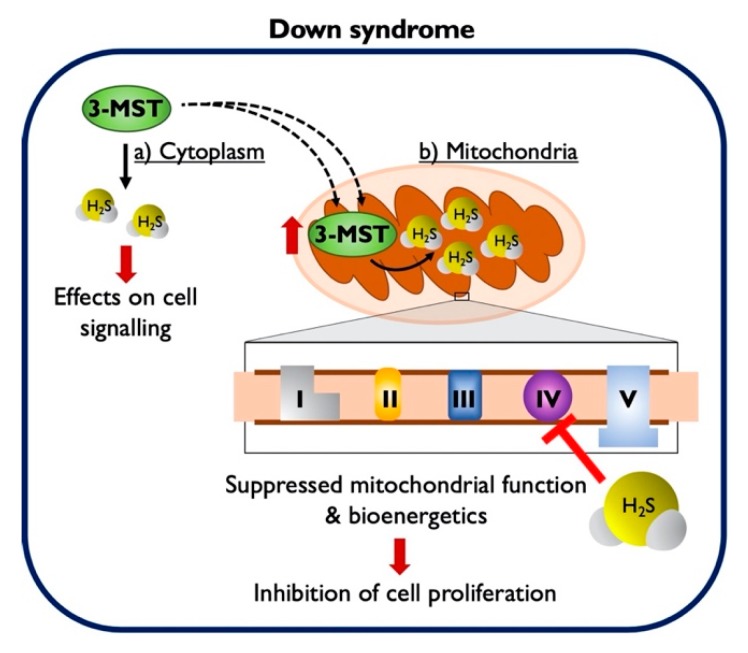Figure 6.
The 3-MST protein is upregulated in Down syndrome and contributes to cell dysfunction. The excess 3-MST is transported into the mitochondria. The subsequent overproduction of H2S suppresses mitochondrial electron transport and causes a cellular bioenergetic deficit, which is evidenced, amongst other responses, by a suppression of the cellular proliferation rate. Pharmacological inhibition of 3-MST with HMPSNE (not shown in this scheme) corrects H2S overproduction and improves bioenergetic parameters, resulting in the stimulation of Down syndrome cell proliferation.

